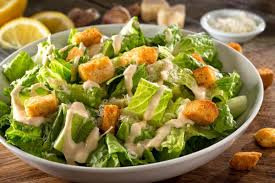Introduction
Cooking isn’t just about ingredients; it’s about stories, traditions, and history. Many beloved dishes have roots that go back centuries, and they bring with them tales of culture, adaptation, and family. Below, we explore iconic recipes that have fascinating stories behind them a Dash of History Recipes with a Story Behind Them . These dishes are not only delicious but offer a glimpse into the past. If you learn this recipe, you can watch the classy kitchen’s best online cooking course in Bangalore.
Caesar Salad: A Dish Born from Necessity
The Caesar Salad, now a staple at restaurants worldwide, was created in a moment of desperation. It was 1924, and Italian-American restaurateur Caesar Cardini, who operated a restaurant in Tijuana, Mexico, was running low on supplies due to a busy Fourth of July. With few ingredients left, he crafted a simple yet flavorful salad using romaine lettuce, olive oil, raw egg, croutons, Parmesan cheese, and Worcestershire sauce.
Classic Caesar Salad Recipe

Ingredients:
- 1 head of romaine lettuce, chopped
- 1/4 cup olive oil
- 1 raw egg (or 1 tablespoon mayonnaise for a safer option)
- 1/4 cup grated Parmesan cheese
- 1 tbsp Worcestershire sauce
- 1 cup chopped tomatoes
- Salt and pepper to taste
Toss the lettuce with olive oil, Worcestershire sauce, and a lightly beaten egg. Add the Parmesan and croutons, and season with salt and pepper. Serve immediately for a crisp and refreshing salad.
French Onion Soup: From Humble Beginnings to Fine Dining
French Onion Soup dates back to Roman times, but it became popular in 18th-century France as a dish of the working class. Onions were inexpensive and plentiful, making them a perfect base for a hearty soup. Over time, the recipe evolved, with chefs adding beef broth, croutons, and melted Gruyère cheese to turn this once humble dish into a gourmet staple.
Traditional French Onion Soup Recipe
Ingredients:
- 4 large onions, thinly sliced
- 4 teaspoons butter
- 1 teaspoon flour
- 6 cups beef broth
- 1/2 cup white wine
- 1 baguette, sliced and toasted
- 1 cup Gruyère cheese, grated
In a large pot, melt the butter and sauté the onions over low heat until caramelized about 40 minutes. Stir in the flour and cook for 2 minutes. Add the beef broth and wine, then simmer for 30 minutes. Ladle the soup into bowls, top with toasted baguette slices and Gruyère cheese, and broil until the cheese is bubbly and golden.
Spaghetti Carbonara: A Post-War Italian Invention
While many believe that spaghetti carbonara has ancient roots, the dish was invented in the 1940s during World War II. American soldiers stationed in Italy brought with them rations of eggs and bacon, which Italian cooks used to create this simple yet iconic pasta dish. With just a few ingredients—eggs, cheese, pancetta, and black pepper—Carbonara became a favorite across the world.
While many believe that spaghetti carbonara has ancient roots, the dish was invented in the 1940s during World War II. American soldiers stationed in Italy brought with them rations of eggs and bacon, which Italian cooks used to create this simple yet iconic pasta dish. With just a few ingredients—eggs, cheese, pancetta, and black pepper—Carbonara became a favorite across the world.
Ingredients:
- 400g spaghetti
- 150g pancetta, diced
- 2 large eggs
- 1/2 cup Pecorino Romano cheese, grated
- Freshly ground black pepper
Cook the spaghetti in salted water until al dente. While the pasta is cooking, fry the pancetta in a pan until crispy. In a bowl, whisk together the eggs, cheese, and black pepper. Drain the pasta and toss it with the pasta. Off the heat, quickly stir in the egg mixture, ensuring the residual heat cooks the eggs into a creamy sauce. Serve immediately with extra cheese and pepper.
Chicken Tikka Masala: A Blend of Cultures
Chicken Tikka Masala is a dish that exemplifies the blending of Indian and British cuisine. It is believed to have been created in the 1970s by an Indian chef in Glasgow, Scotland, who adapted a traditional Indian recipe to suit British tastes. By adding creamy tomato sauce to the spiced chicken, the dish became an instant hit and remains a popular menu item worldwide.
Chicken Tikka Masala Recipe
Ingredients:
- 500g chicken breasts, cubed
- 1 cup plain yogurt
- 2 tbsp garam masala
- 1 tbsp turmeric
- 1 tsp cumin
- 1 onion, diced
- 2 garlic cloves, minced
- 1 can (400g) diced tomatoes
- 1/2 cup heavy cream
- Fresh cilantro for garnish
Marinate the chicken in yogurt, garam masala, turmeric, and cumin for at least an hour. Grill or cook the chicken until slightly charred. In a large pan, sauté the onions and garlic, then add the tomatoes and simmer for 15 minutes. Stir in the cream and grilled chicken, and cook for an additional 10 minutes. Garnish with cilantro and serve with rice or naan. You can watch this in online cooking classes at home.
Victoria Sponge Cake: A Queen’s Favorite
Named after Queen Victoria, who enjoyed a slice of sponge cake with her afternoon tea, the Victoria Sponge Cake became popular in the 19th century. The cake is known for its light, airy texture, and it’s traditionally filled with jam and whipped cream. It remains a beloved British dessert, often served at tea parties and special occasions.
Victoria Sponge Cake Recipe
Ingredients:
- 1 cup unsalted butter, softened
- 1 cup sugar
- 4 eggs
- 1 cup self-rising flour
- 1/2 cup raspberry jam
- 1/2 cup whipped cream
- Powdered sugar for dusting
Preheat the oven to 350°F. Cream the butter and sugar together, then beat in the eggs one at a time. Fold in the flour until well combined. Divide the batter between two greased cake pans and bake for 20-25 minutes. Once cooled, spread jam and whipped cream between the layers, then dust the top with powdered sugar. This recipe is a low-calorie recipe.
Conclusion: Food and History on a Plate
Each of these recipes has a rich history, adding depth and meaning to every bite. From the accidental creation of Caesar Salad to the cultural fusion behind Chicken Tikka Masala, these dishes are more than just food—they’re stories passed down through generations. As you cook and enjoy these recipes, take a moment to appreciate the history they carry with them.
